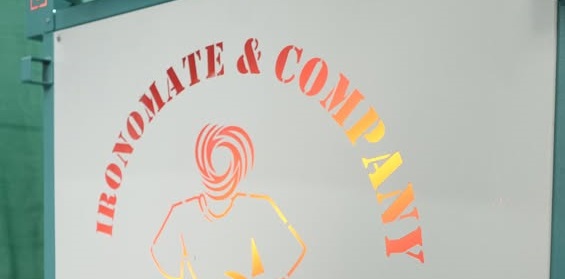Feeling overwhelmed? Drowning in tasks and deadlines? You’re not alone. In today’s fast-paced world, the pursuit of productivity is a constant journey. Whether you’re a student, a professional, or a stay-at-home parent, finding ways to maximize your efficiency and achieve your goals is crucial for success and well-being. This blog post delves into proven productivity strategies, offering actionable tips and insights to help you conquer your to-do list and reclaim your time.
Understanding Productivity and its Importance
Defining Productivity
Productivity isn’t simply about doing more; it’s about achieving more with less. It’s the ratio of output to input – how effectively you utilize your time, energy, and resources to reach your desired outcomes. A highly productive person isn’t necessarily working longer hours; they’re working smarter.
The Benefits of Increased Productivity
Improved productivity translates to numerous advantages in various aspects of life:
- Reduced Stress: By managing your time and tasks effectively, you’ll feel less overwhelmed and more in control.
- Increased Accomplishment: Achieving your goals, whether big or small, provides a sense of satisfaction and boosts your self-esteem.
- More Free Time: Productivity frees up time for hobbies, relaxation, and spending time with loved ones.
- Career Advancement: Consistently delivering high-quality work efficiently can lead to recognition and opportunities for growth.
- Improved Work-Life Balance: By managing your workload effectively, you can create a better balance between your professional and personal life.
Debunking Productivity Myths
It’s important to separate fact from fiction when it comes to productivity. Some common myths include:
- Multitasking is efficient: Studies show that multitasking actually decreases productivity and increases errors. Focusing on one task at a time is generally more effective.
- Working longer hours equals higher productivity: Overworking can lead to burnout and decreased performance. Taking breaks and prioritizing rest is essential for sustained productivity.
- Productivity is solely about hard work: While effort is important, strategic planning, effective time management, and utilizing the right tools are equally crucial.
Time Management Techniques for Enhanced Productivity
The Pomodoro Technique
The Pomodoro Technique is a time management method that involves working in focused 25-minute intervals, separated by short breaks. After four “pomodoros,” take a longer break.
- How it works: Set a timer for 25 minutes, focus on a single task without distractions, and take a 5-minute break afterward. Repeat this cycle four times, then take a longer 20-30 minute break.
- Example: If you’re writing a report, dedicate a pomodoro to outlining, another to writing the introduction, and so on.
Time Blocking
Time blocking involves scheduling specific blocks of time for specific tasks or activities. This technique helps you visualize your day and allocate time strategically.
- How it works: Create a daily or weekly schedule, blocking out time for tasks such as meetings, work projects, exercise, and personal time.
- Example: Schedule a block of time from 9:00 AM to 12:00 PM for focused work on a specific project, followed by a block for answering emails.
The Eisenhower Matrix (Urgent/Important Matrix)
The Eisenhower Matrix is a tool for prioritizing tasks based on their urgency and importance. It helps you focus on what truly matters and avoid getting bogged down in less critical activities.
- The four quadrants:
Urgent and Important: Tasks that need immediate attention and contribute to your goals (e.g., crisis management, deadlines). Do these tasks immediately.
Important but Not Urgent: Tasks that contribute to your long-term goals but don’t require immediate attention (e.g., planning, relationship building). Schedule time for these tasks.
Urgent but Not Important: Tasks that demand immediate attention but don’t contribute to your goals (e.g., some phone calls, interruptions). Delegate these tasks if possible.
Neither Urgent nor Important: Tasks that are time-wasters and should be eliminated (e.g., mindless browsing, unnecessary meetings). Eliminate these tasks.
Optimizing Your Workspace and Environment
Creating a Dedicated Workspace
Having a designated workspace can significantly improve focus and productivity. Choose a location that is quiet, comfortable, and free from distractions.
- Tips for setting up a workspace:
Choose a location with good lighting and ventilation.
Invest in a comfortable chair and desk.
Keep your workspace organized and clutter-free.
Minimize distractions by silencing notifications and closing unnecessary tabs.
Minimizing Distractions
Distractions are a major productivity killer. Identify your biggest distractions and take steps to minimize them.
- Common distractions and solutions:
Social media: Use website blockers or apps to limit your time on social media.
Email notifications: Turn off email notifications and check your email at specific times during the day.
Noise: Use noise-canceling headphones or listen to ambient music to block out distracting sounds.
Interruptions: Inform colleagues or family members that you need uninterrupted time to focus on your work.
Utilizing Technology and Productivity Tools
Numerous apps and tools can help you stay organized, manage your time, and boost your productivity.
- Examples of productivity tools:
Task management apps: Asana, Trello, Todoist
Note-taking apps: Evernote, OneNote, Google Keep
Time tracking apps: Toggl Track, RescueTime
Focus apps: Freedom, Forest
- Choosing the right tools: Experiment with different tools to find those that best suit your needs and workflow.
Prioritization and Goal Setting
Setting SMART Goals
Setting clear, specific, and achievable goals is essential for staying motivated and focused. SMART goals are Specific, Measurable, Achievable, Relevant, and Time-bound.
- Example: Instead of setting a vague goal like “Improve my writing,” set a SMART goal like “Write one blog post per week for the next month.”
Prioritizing Tasks with the Pareto Principle (80/20 Rule)
The Pareto Principle suggests that 80% of your results come from 20% of your efforts. Identify the 20% of tasks that will have the biggest impact and prioritize them accordingly.
- Applying the Pareto Principle: Focus on the tasks that will generate the most significant results and delegate or eliminate less important tasks.
Breaking Down Large Tasks into Smaller Steps
Overwhelmed by a large project? Break it down into smaller, more manageable steps. This makes the project seem less daunting and easier to tackle.
- Example: Instead of feeling overwhelmed by writing an entire book, break it down into chapters, sections, and even individual paragraphs.
Maintaining Focus and Motivation
Taking Regular Breaks
Taking short breaks throughout the day can actually increase your productivity. Breaks help you recharge, refocus, and avoid burnout.
- Types of breaks: Take a walk, stretch, listen to music, or simply step away from your workspace for a few minutes.
Practicing Mindfulness and Meditation
Mindfulness and meditation can help you improve focus, reduce stress, and enhance your overall well-being.
- Benefits of mindfulness: Increased focus, reduced anxiety, improved sleep, and greater self-awareness.
Celebrating Small Wins
Acknowledging and celebrating your accomplishments, no matter how small, can boost your morale and keep you motivated.
- Example: Reward yourself with a small treat or activity after completing a challenging task.
Conclusion
Boosting your productivity is a continuous journey, not a destination. By implementing the strategies and techniques outlined in this blog post, you can optimize your time, manage your tasks effectively, and achieve your goals with greater ease and efficiency. Remember to experiment with different approaches, identify what works best for you, and consistently strive to improve your productivity habits. Start small, stay consistent, and watch your accomplishments soar!






